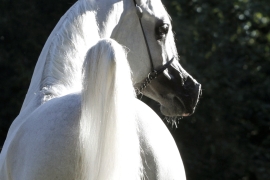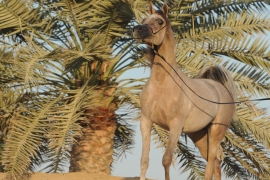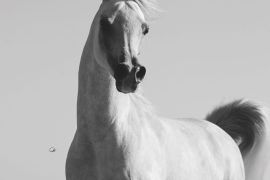This series is about taking a look back, just for fun, at some photos of horses born at the R.A.S. many years ago who are no longer found in straight Egyptian breeding but might have made some interesting contributions to the quality and genetic choices for today’s straight Egyptians.
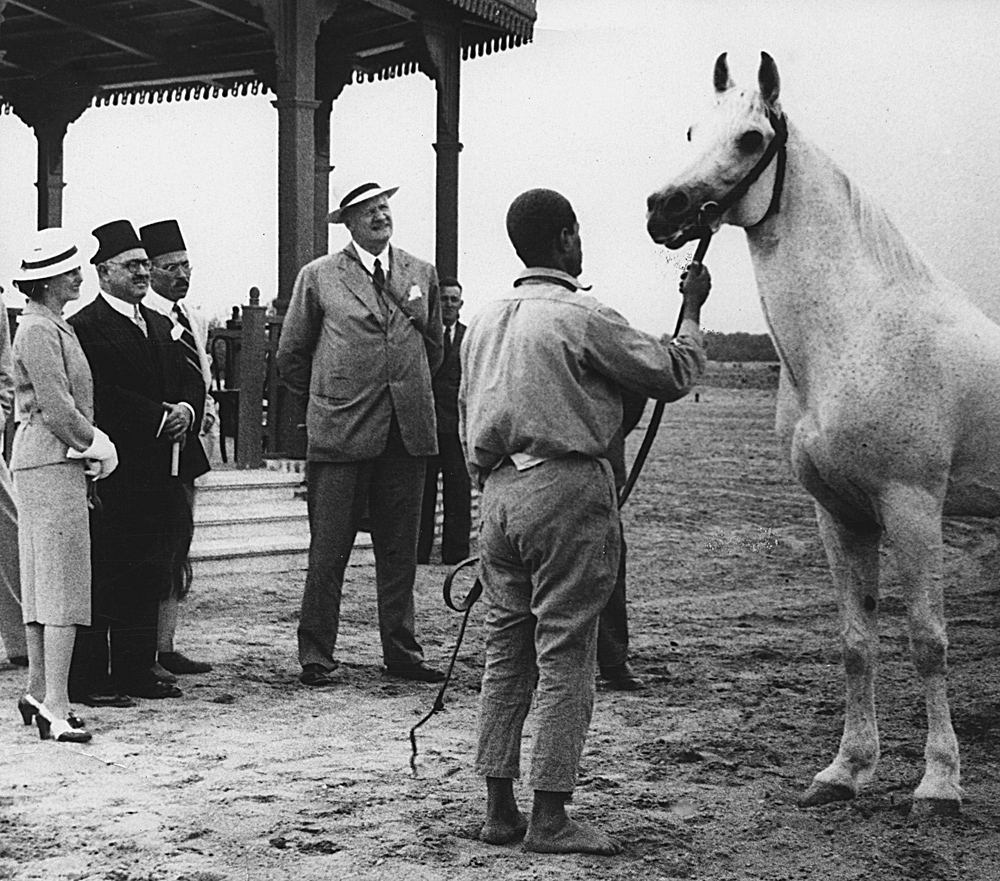
The old stallion Awad (Mabrouk Manial x Bint Obeya)
being presented to visitors at the R.A.S. in the late 1930s.
Note his very large eyes.
Forbis archive photo.
I chose the opening photo above just for reminiscing. In the late 1930s at the R.A.S. Nazeer would have been a young horse at the race track and then out at the stallion depots so he was not yet a phenomenon to be presented to visitors. His sire Mansour was much in use and had proved to be a very good sire. Mansour’s first prominent son, Sheikh El Arab (x Bint Sabah), would precede Nazeer at stud at the R.A.S. Today we have Sheikh El Arab blood only through his daughters, not any of his sons.
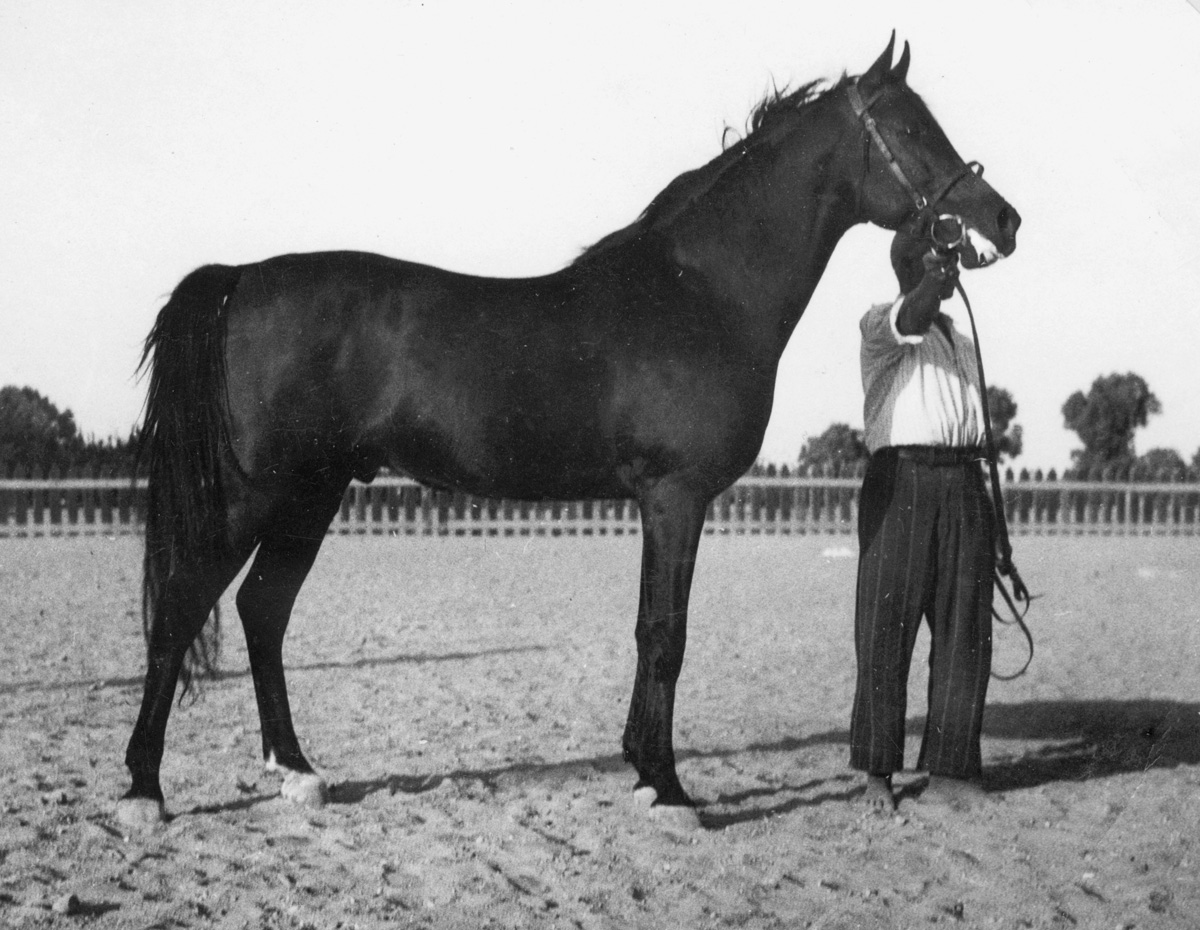
Above is El Dalil 1940 bay stallion by Sheikh El Arab x Bint Dalal.
Forbis archive photo.
In the Forbis archive are photos of two sons of Sheikh El Arab who are not found today in straight Egyptian breeding. The first is the 1940 bay stallion El Dalil (x Bint Dalal). He was used once by the R.A.S. producing a bay daughter named Dalila II (x Shams) sold as a 3 year old. Nothing much is known about what became of El Dalil but since his daughter was out of the mare Shams (Mashaan x Bint Samiha) there must have been some interest for racing potential. He appears to be a very handsome horse. The second son of Sheikh El Arab pictured here is Salhan, a 1943 grey stallion out of Medallela, making him a full brother to Wanisa the dam of legendary Moniet El Nefous. A handsome horse, Salhan also exhibits the type and quality that seems consistent from Sheikh El Arab. However, there are no recorded get of Salhan and nothing further is known about his fate. Sheikh El Arab’s daughters became legendary for their produce, yet sadly no sons succeeded him. Because most of his get were born during the era of World War II, one would speculate that point in history might have limited breeding opportunities for Arabians. Perhaps if either of these two Sheikh El Arab sons had been given an opportunity for a good selection of mares things would be different. They would have added a new branch to the Saklawi I sire line which now is only represented by Nazeer.
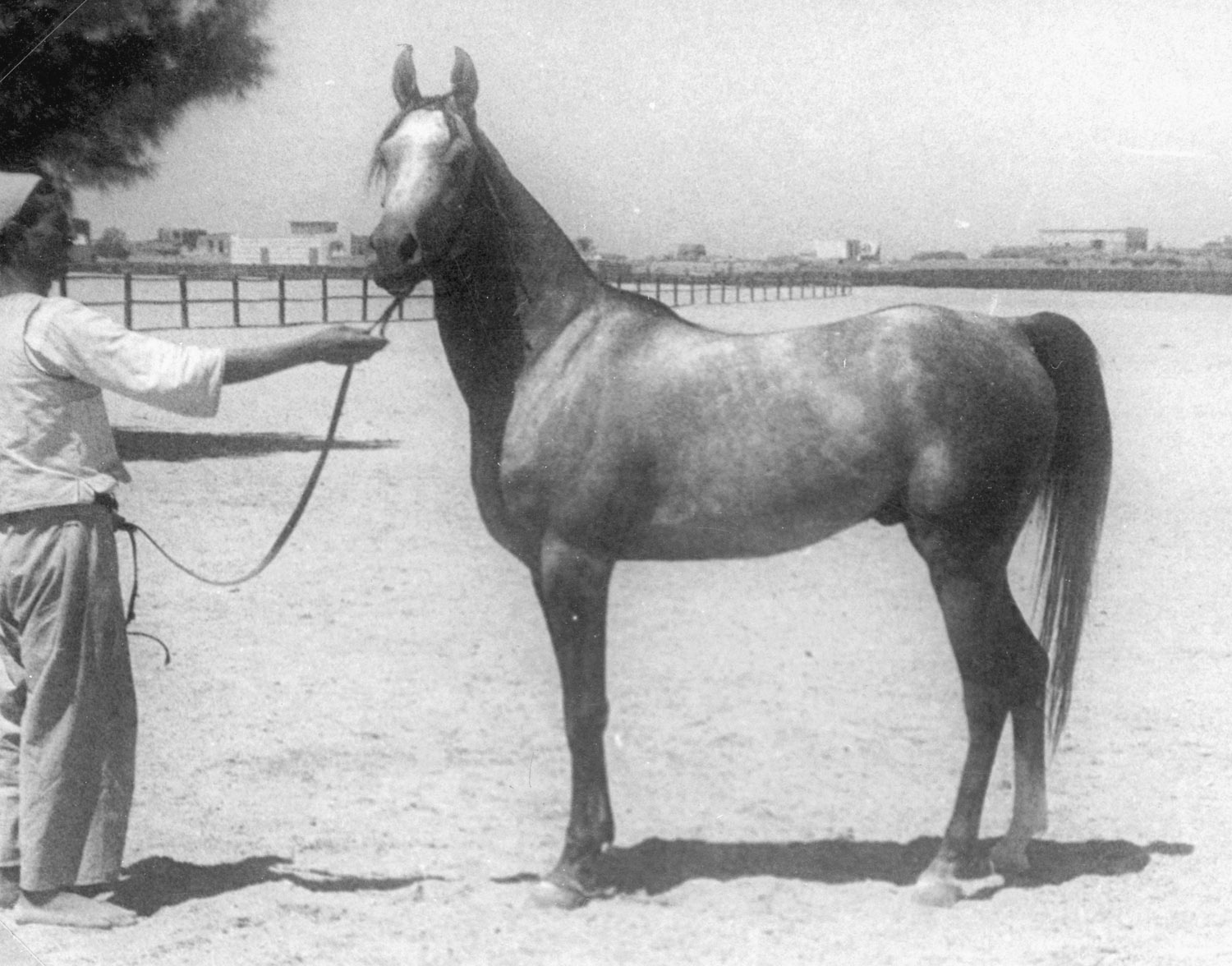
Above is Salhan 1943 grey stallion by Sheikh El Arab x Medallela,
a handsome full brother to Wanisa, dam of Moniet El Nefous.
Forbis archive photo.
Digging further in the Forbis archive reveals a photo of the R.A.S. mare Bint Rabdan. This lovely flea bitten grey mare is a full sister to the celebrated sire Ibn Rabdan (Rabdan El Azrak x Bint Gamila). She was born in 1921 and produced five foals for R.A.S. Unfortunately she died after her fifth foal, named Hakma, sired by El Deree. Hakma was sold to Mohammed Hilmi Baleigh and has no recorded progeny. Her only other daughter Rasmeia, sired by Rustem, was sold to the Italian Government. So there were no daughters to replace Bint Rabdan at the R.A.S., a loss considering the legacy of the Hadban Inzihi strain. Bint Rabdan produced three sons, Ibn Bint Rabdan (x Hamran), Dahshan (x Mansour) and Habashi (x Mansour). Dahshan died at age nine without any get, and there are no get recorded for the other two sons of Bint Rabdan. For such a nice mare, it is a shame that Bint Rabdan did not leave any legacy today, even though there is considerable representation of her brother Ibn Rabdan. Judging from Bint Rabdan’s son Habashi who is pictured here there seems to be a lot of quality in her get. Note Habashi’s excellent legs and good proportions as well as having large eyes well placed in his head. Habashi was sired by Mansour, so again, if he would have been given an opportunity at stud he could have created another branch of the Saklawi I sire line. Often such good stallions spent their lives in the stallion depots out in the provinces to improve local horses and that is no doubt a worthy contribution for the Egyptian population who depended on good horse flesh to conduct their daily business. Nazeer himself spend much of his life in the provinces before being called back for stud at the R.A.S. [later renamed E.A.O.].
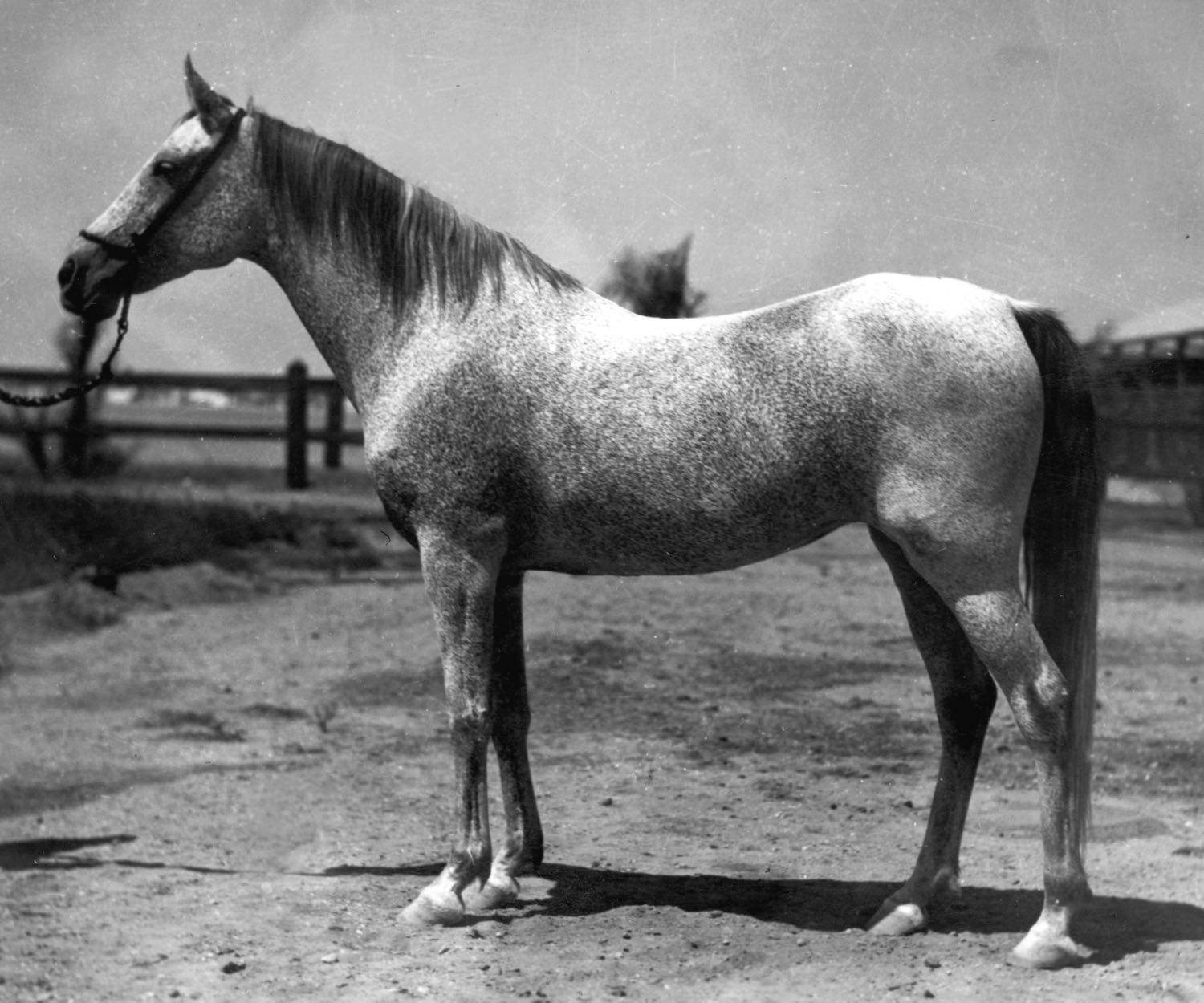
Above is Bint Rabdan, 1921 grey mare (Rabdan El Azrak x Bint Gamila)
a lovely full sister to Ibn Rabdan.
Forbis archive photo.
While on the subject of Nazeer and the Hadban Inzahi strain, Nazeer’s dam was favored by the racing community and her line has done well on the track. In honor of the new young King Farouk, the R.A.S. gave the stallion Hamdan (Ibn Rabdan x Bint Radia) to the Royal Inshass Stud in exchange for El Deree from the King. At the R.A.S. El Deree sired a number of good foals, [see Arabian Essence Newsletters April and May 2009] one of which was out of Nazeer’s dam Bint Samiha. The resulting foal was the mare Morgana. This would have been an ideal representative of both parents. In Morgana’s picture as a young mare one can see the good legs and conformation of her sire along with a lovely head of her dam. Morgana was sold to Mohammed Taher, presumably for the racing community, however she left no recorded progeny. El Deree was a wonderful out cross for the R.A.S. mares giving quality and genetic diversity. It would have been very nice if Morgana had replaced herself several times at the R.A.S. before being sold but it was not to be.
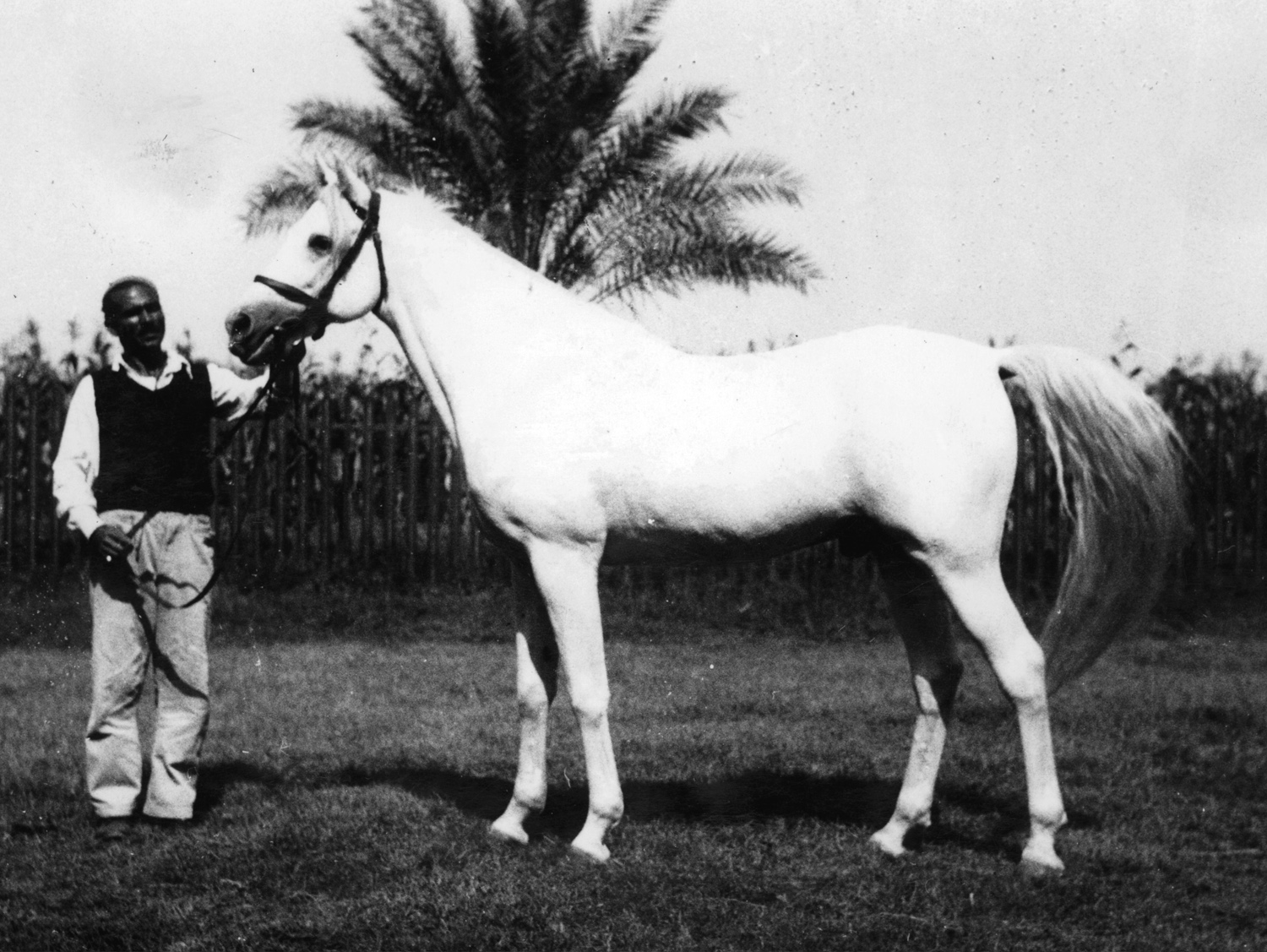
Above is Habashi, 1935 grey stallion (Mansour x Bint Rabdan).
He was Bint Rabdan’s last son before she died.
Note his overall high quality.
Forbis archive photo.
Another El Deree get produced in 1936 at the R.A.S. was the stallion Azeem out of Hind (Ibn Rabdan x Bint Rustem). The photo at right shows the good overall quality and form of another El Deree get from a mare of the Hadban Inzihi strain. His dam’s line is that of the famed Aswan and Simeon Shai. If Azeem had been retained by the R.A.S. and given an opportunity for a selection of good mares, it would have been another opportunity to preserve the now very, rare El Deree sire line. But it did not happen.
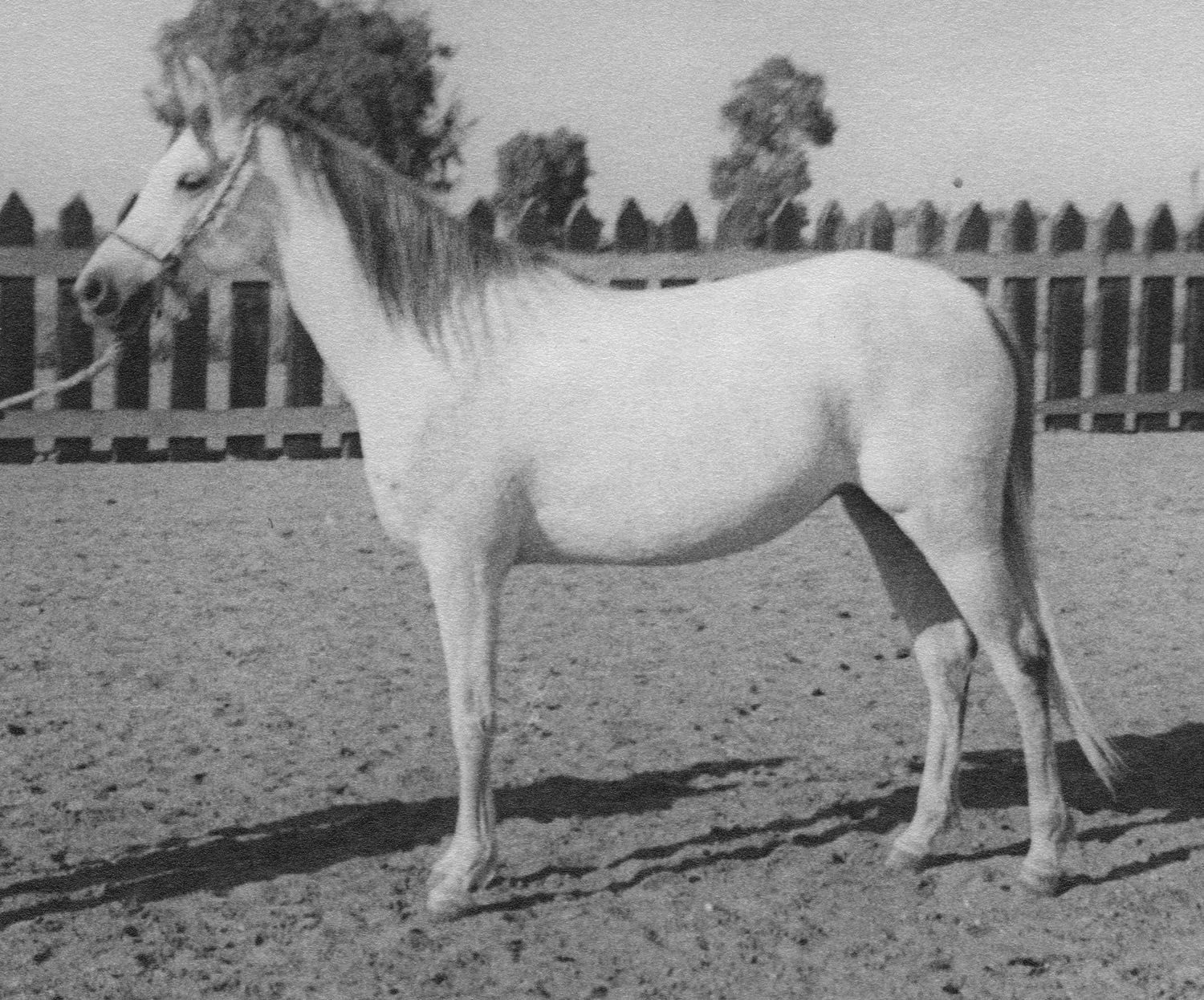
Above is Morgana, 1936 grey mare (El Deree x Bint Samiha).
Another good El Deree daughter bred by the R.A.S. sold to Mohammed Taher.
Forbis archive photo.
While all of this is just speculation and perhaps a bit of lament about past choices, this newsletter is intended to encourage thinking about what has bred on into today, and to take a second look at maintaining some diversity so that the future of Egyptian breeding will not need to be one of fewer choices. Every new foal born deserves a closer look.
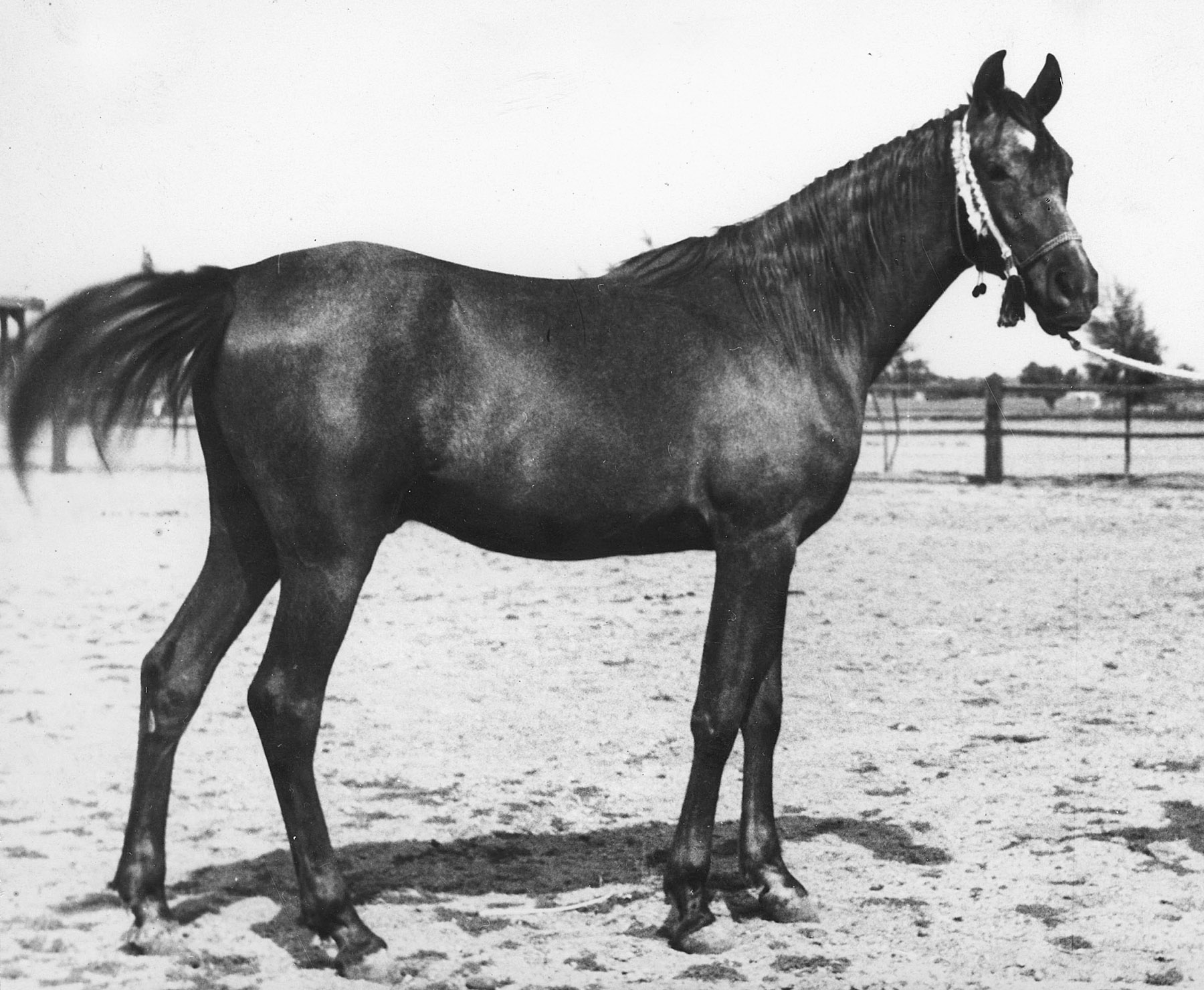
Above is Azeem as a young colt, 1936 grey stallion (El Deree x Hind).
A good El Deree son bred by the R.A.S.
Forbis archive photo.





